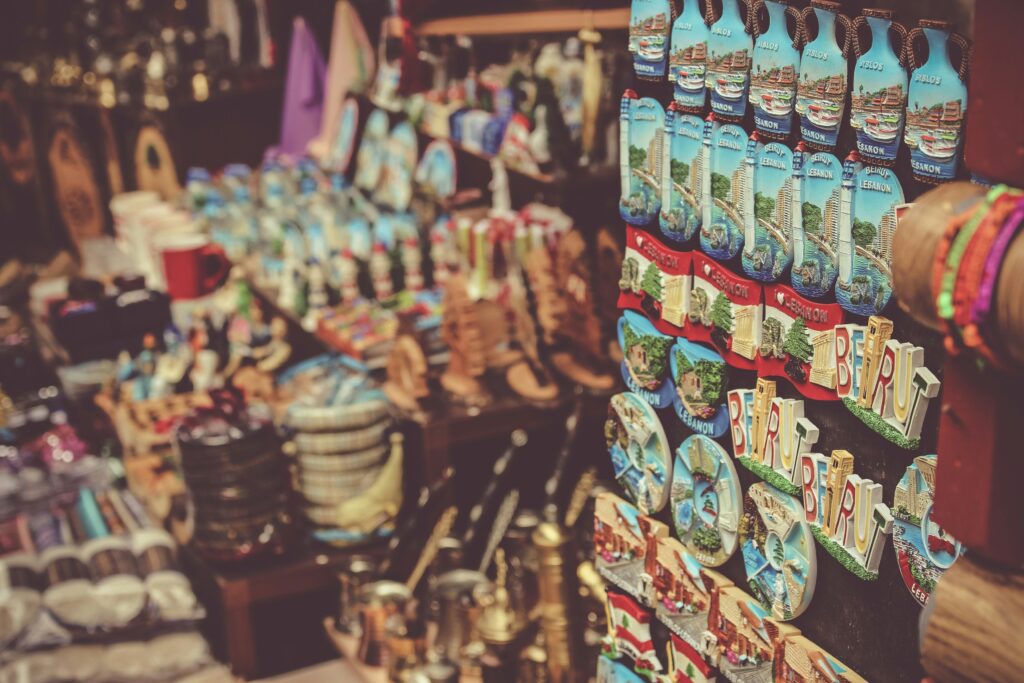
On my first trip to Europe, I stepped into a quaint little shop in Florence. The bright colors and unique trinkets caught my eye. I ended up buying a hand-painted ceramic plate. It wasn’t cheap, but it felt special. Fast forward a few months, and I realize I rarely use it. It’s pretty, sure, but was it worth the money? This experience made me think: why do we overspend on souvenirs when we travel?
In this blog post, we’ll break down the reasons travelers overspend on souvenirs abroad and how you can avoid falling into the same trap. Knowing why we spend can help us make better choices when traveling. Plus, saving some cash for experiences instead of trinkets is usually more rewarding.
Emotional Connections
Here’s the thing: emotions drive many of our purchases while traveling. You see something, and it strikes a chord. It reminds you of the amazing time you had or the people you met. It’s easy to get swept up in that moment of joy and plunk down cash without thinking.
For instance, you might pick up a handmade scarf in Morocco. It’s beautiful, and it makes you think of the bustling markets and warm nights. You’re feeling nostalgic. But later, you realize you’ve spent a small fortune on something you could have found at home for a fraction of the price.
The “Limited-Time Offer” Trap
Another big reason people overspend is the fear of missing out (FOMO). Vendors know this well. They often say, “This is the last one!” or “Limited edition!” And suddenly, that scarf feels like a must-have.
But here’s the problem: these “limited-time offers” often inflate the prices. Start asking yourself: do I really need this? Will it matter in a few months, or even next week? Most chances are, it won’t.
Peer Pressure and Social Media Influence
There’s this unspoken pressure to bring back cool stuff. If your friends or social media followers rave about their finds, you might feel like you need to keep up. You see a photo of someone holding a giant, colorful souvenir and then feel compelled to buy something just as impressive.
This pressure can lead you to make purchases you wouldn’t normally make. You could end up with several items you don’t really love, just to showcase your adventures on Instagram or TikTok.
Tip: Reflect Before You Buy
A simple way to counteract this is to take a moment to reflect before making a purchase. Ask yourself: “Is this something I truly love? Will I cherish it, or will it end up collecting dust?” Take a pause. It can save you a lot of regret later on.
Comparative Pricing Ignorance
When you’re traveling, you might not have all the info you need about prices. A trinket could seem like a good deal in a market, but when you get home, you discover you paid way too much. Local artisan markets often charge a premium for tourist items simply because they can.
Let’s say you’re in Mexico and see a colorful piece of pottery. It costs $50. If you had been in a local store back home, you might find something very similar for $30. Do some quick research if you can. Google can often help find similar items and give you a sense of reasonable pricing.
Tip: Compare Prices
Take advantage of the internet. Before you buy something, check if it’s available online and at what price. It might give you a clearer perspective on whether you’re getting a fair deal.
Sentimental Value vs. Material Value
Many travelers sometimes forget about the sentimental value of experiences. It’s easy to think a physical item will remind you of your trip. But most of the time, the memories are what matter most.
For instance, instead of buying a replica of the Eiffel Tower, consider investing in a memorable dinner at a local café or a scenic boat ride. Those experiences will stay with you a lot longer than a plastic souvenir ever could.
Tip: Focus on Experiences
When deciding how to spend your money, think about experiences over purchases. Try to budget a portion of your trip funds for memorable activities instead of souvenirs that might not hold the same value over time.
Handling Buyer’s Remorse
Even if you’re cautious, it’s still possible to end up with souvenirs that just don’t bring you joy. Buyer’s remorse can hit hard when you realize you overspent on something that sits in the back of your closet.
To combat this, consider a money-back policy. Some places may allow you to return items. Hold onto receipts if possible. When you leave a market or store, give yourself a cooling-off period. If you still want the item after an hour or two, then go back for it.
Tip: The One-In-One-Out Rule
For every souvenir you buy, think about letting go of something else. This can help you stay mindful of what you’re bringing back home. It shifts the focus back to quality over quantity.
Takeaway
So next time you’re staring at something shiny in a shop, pause. Reflect on whether it adds real value to your journey or if it’s just another trinket you’ll eventually forget. Your future self will thank you.
[Related: Check out these tips on budget travel to save more for experiences.]
**Related Reading:** – [Related: How to Plan a Solo Trip on a Budget] – [Related: Top Destinations for First-Time Solo Travelers] **#SoloTravel #Travelers #Overspend #Souvenirs #Top #Reasons #Avoid**